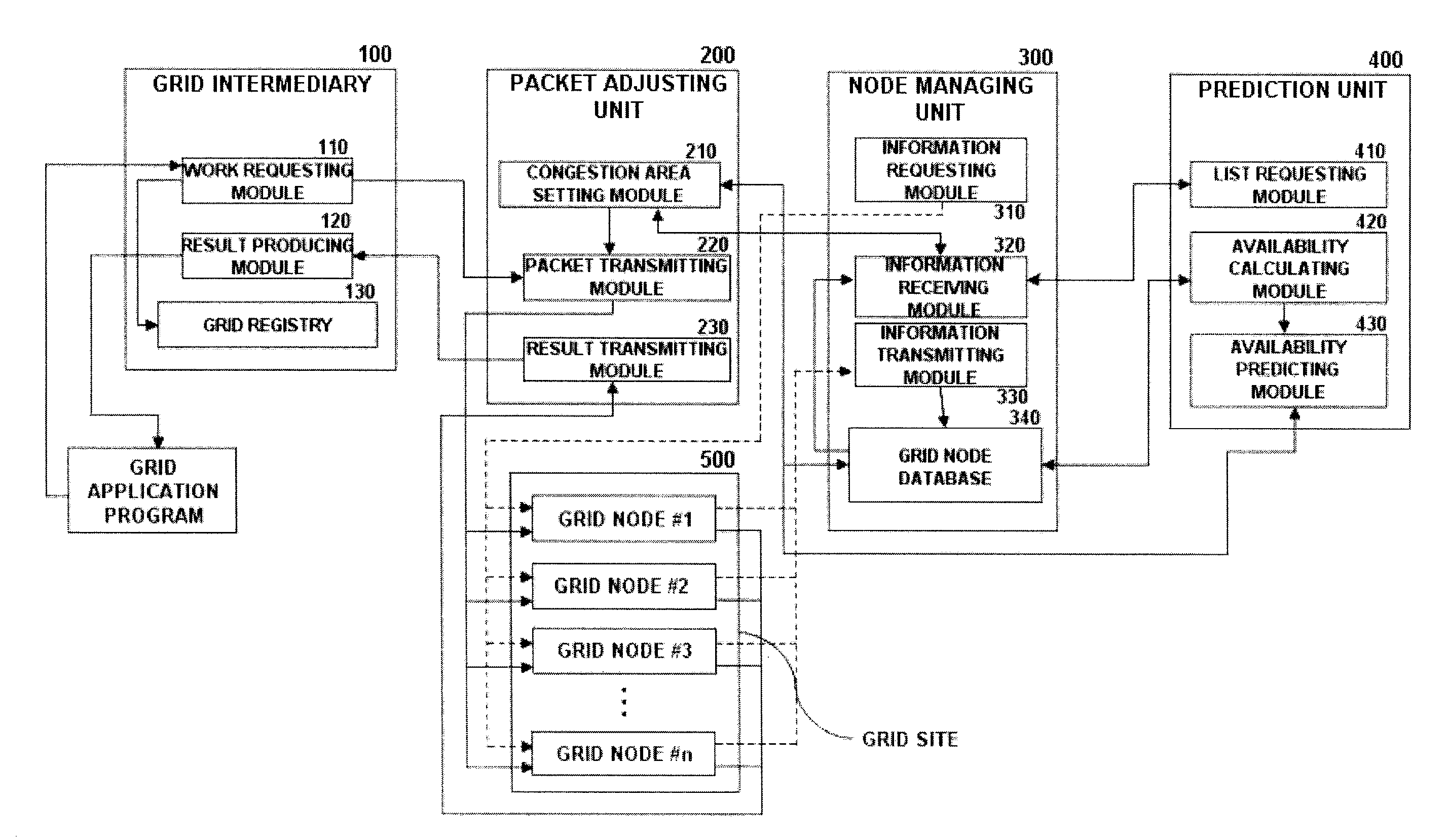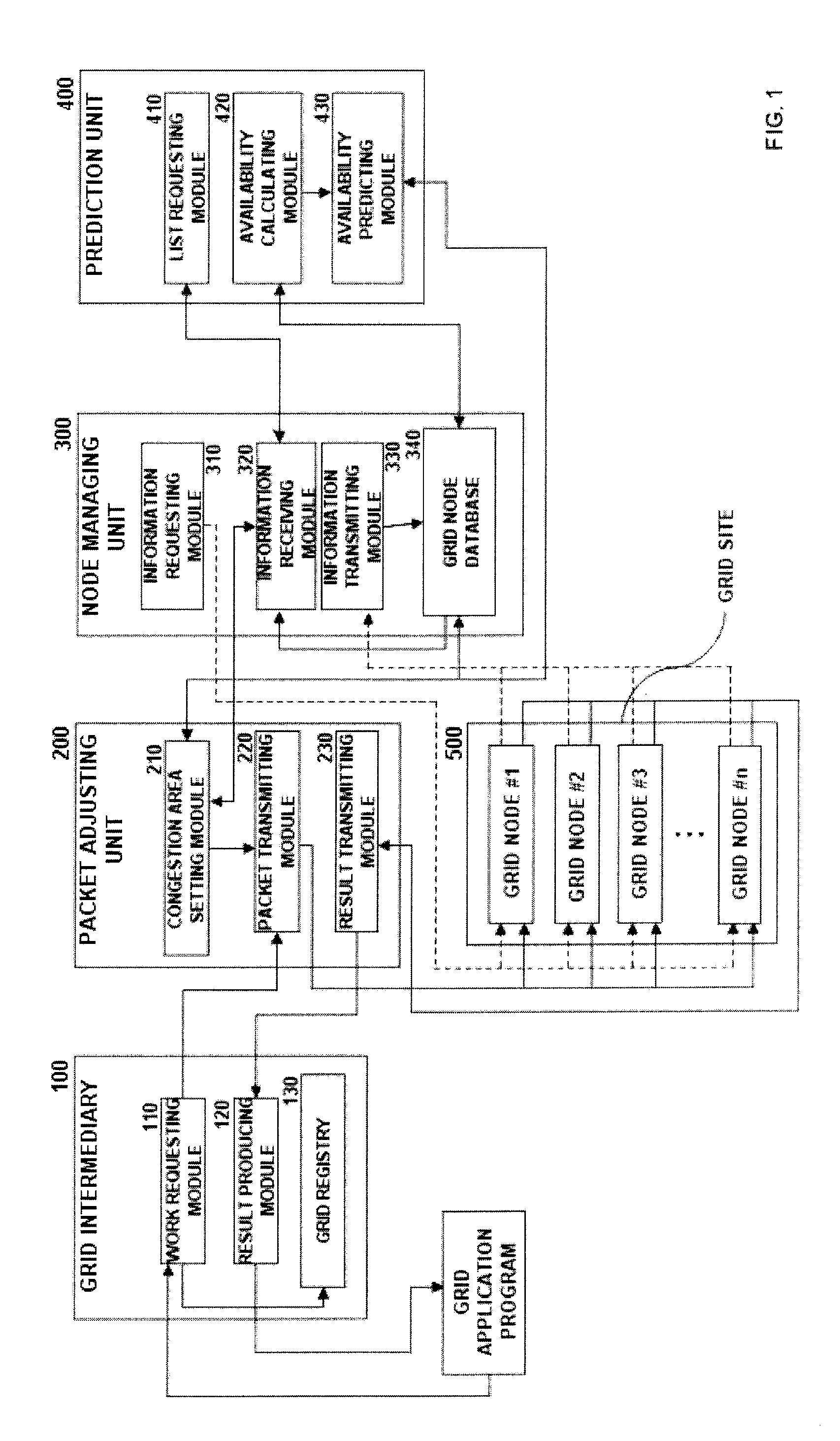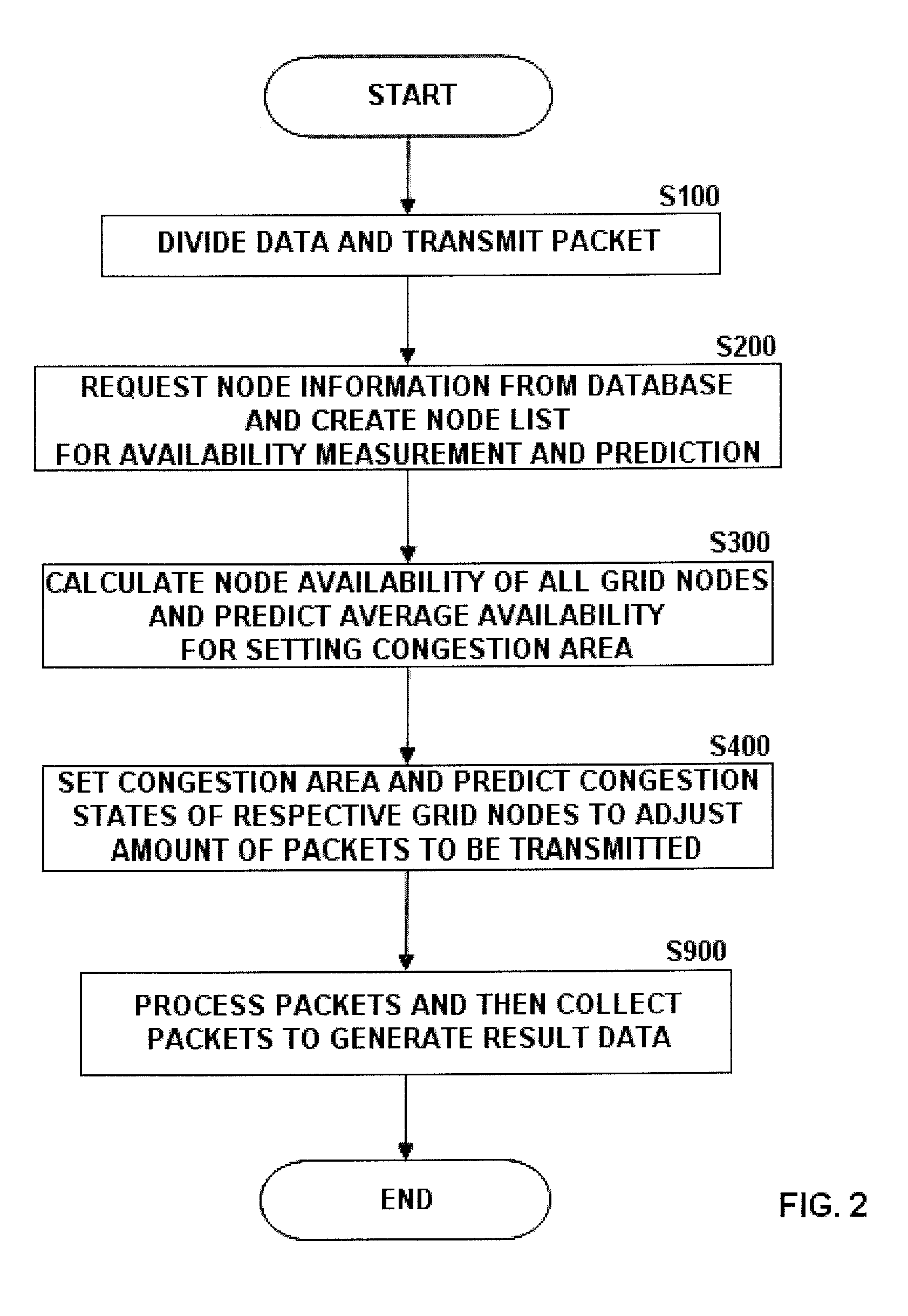Node availability prediction-based grid network congestion control device and method therefor
a technology of availability prediction and grid network, applied in the field of grid computing systems, can solve the problems of packet delay, packet loss, packet delay, etc., and achieve the effect of reducing packet loss and packet delay, high bandwidth, and high network delay
- Summary
- Abstract
- Description
- Claims
- Application Information
AI Technical Summary
Benefits of technology
Problems solved by technology
Method used
Image
Examples
Embodiment Construction
[0049]The following description with reference to the accompanying drawings is provided to assist in a comprehensive understanding of exemplary embodiments to the present invention as defined by the claims and their equivalents. It includes various specific details to assist in that understanding but these are to be regarded as merely exemplary. Accordingly, those of ordinary skill in the art will recognize that various changes and modifications of the embodiments described herein can be made without departing from the scope and spirit of the invention. Also, descriptions of well-known functions and constructions are omitted for clarity and conciseness.
[0050]FIG. 1 is a schematic block diagram illustrating a system for controlling congestion in a grid network according to an exemplary embodiment of the present invention.
[0051]As shown in FIG. 1, the grid network congestion control system is configured to include a grid intermediary that divides data into sub-packets in response to a...
PUM
 Login to View More
Login to View More Abstract
Description
Claims
Application Information
 Login to View More
Login to View More - R&D
- Intellectual Property
- Life Sciences
- Materials
- Tech Scout
- Unparalleled Data Quality
- Higher Quality Content
- 60% Fewer Hallucinations
Browse by: Latest US Patents, China's latest patents, Technical Efficacy Thesaurus, Application Domain, Technology Topic, Popular Technical Reports.
© 2025 PatSnap. All rights reserved.Legal|Privacy policy|Modern Slavery Act Transparency Statement|Sitemap|About US| Contact US: help@patsnap.com



